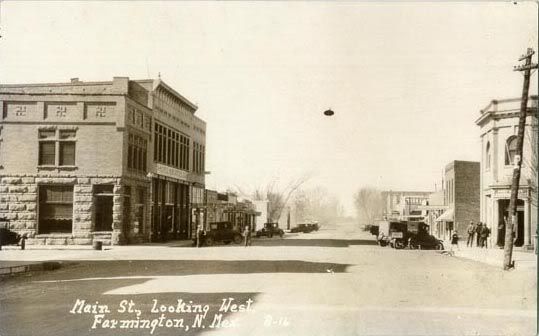Posted on 01/07/2010 9:14:57 AM PST by Salvation
Featured Term (selected at random):
A symbol of the Cross, sometimes called the crux gammata, made up of four Greek gammas joined at their bases. It is of Sanshrit origin and means "good omen." It has several recognized meanings, e.g., rotation of the sun, four points of the compass. It has sometimes been referred to as the crooked cross. It was the emblem of the Nazis in World War II. Seldom used by Christians before the third century, and then only to conceal the Cross from unbelievers.
Another symbol largely employed during the third and fourth centuries, the swastika already spoken of at some length, still more closely resembles the cross. On monuments dating within the Christian Era it is known as the crux gammata, because it is made by joining four gammas at their bases. Many fantastic significations have been attached to the use of this sign on Christian monuments, and some have even gone so far as to conclude from it that Christianity is nothing but a descendant of the ancient religions and myths of the people of India, Persia, and Asia generally; then these theorists go on to point out the close relationship that exists between Christianity, on the one hand, Buddhism and other Oriental religions, on the other. At the very least they insist upon seeing some relation between the symbolical concepts of the ancient religions and those of Christianity. Such was the opinion held by Emile Burnouf (cf. Revue des Deux Mondes, 15 August, 1868, p. 874). De Rossi ably refuted this opinion, and showed the real value of this symbol on Christian monuments (Bull. d' arch. crist., 1868, 88-91). It is fairly common on the Christian monuments of Rome, being found on some sepulchral inscriptions, besides occurring twice, painted, on the Good Shepherd's tunic in an arcosolium in the Catacomb of St. Generosa in the Via Portuensis, and again on the tunic of the fossor Diogenes (the original epitaph is no longer extant. In the catacomb of St. Domitilla in the Via Ardeatina. Outside of Rome it is less frequent. There is one example in an inscription found at Chiusi (see Cavedoni, Ragguaglio di due antichi cimiteri di Chiusi). A stone in the museum at Bergamo bears the monogram joined to the gamma cross, but it would seem to be of Roman origin. Another in the Mannheim Museum, with the name of a certain Hugdulfus, belongs to the fifth or sixth century. In a sarcophagus at Milan belonging to the fourth century it is repeated over and over again, but evidently as a mere ornamental motive (see Allegranza, Mon. di Milano, 74).
De Rossi (Rom. Sott. Crist., II, 318) made researches into the chronology of this symbol, and the examples of it to be found in the catacombs at Rome, and he observed that it was seldom or never used until it took the place of the anchor, i.e. about the first half of the third century, whence he inferred that, not being of ancient tradition, it came into fashion as the result of studied choice rather than as a primitive symbol linking the beginnings of Christianity with Asiatic traditions. Its genesis is reflex and studied, not primitive and spontaneous. It is well known how anxiously the early Christians sought out means whereby they could at once portray and conceal the Cross of Christ. That in this way they should have discovered and adopted the crux gammata, is easily intelligible, and it is explained not merely by what has already been said, but also by the similarity between the Greek character gamma () and the Phnician character tan. The latter has been famous since Apostolic times as a symbol of the Cross of Christ and of the Redemption (cf. Barnabæ Epist., ix, 9).
Catholic Word of the Day – links will be provided later by another FReeper.
|
Casualism |
Victim |
Frustulum |
|
Unity |
Isaiah |
Episcopal Curia |
|
Wake |
Canonical Age |
Paschal Candle |
|
Doctrinal Demythology |
Pro Armenis |
Lamb |
|
Responsory |
Dogma |
Roman Martyrology |
|
Greek Rites |
Anglican Orders |
Attritionism |
|
Ciborium |
Paenitemini |
Amice |
|
Feast of the Visitation |
Our Lady Protectress of Rome (Salus Populi Romani) |
Tosefta |
|
Györ |
Poverty of Sharing |
Sollicitudo Omnium Ecclesiarium |
|
Penalty, Penitential |
Intuition |
Witness |
|
Sanctuary of [Our] Sorrowful Mother |
Basilians |
Evil Habits |
|
Orate Fratres |
Codex Sinaiticus |
Clothing of Religious |
|
Unam Sanctam |
Eckhartism |
Christendom |
|
Herodias |
Tower of Babel |
Tabula Rasa |
|
Jeronymites/Heironymites |
Individuation |
Swastika |
|
|
|
|
Catholic Word of the Day Ping!
Please send me a FReepmail if you would like to be on the Catholic Word of the Day Ping List.
No wonder it was hijacked by an AntiChrist. It's a symbol of cowardice.
And the proponents of socialism.
There used to be a Swastika Hotel in Raton NM but it changed it's name when Germany declared war on the US. There is also another town that still has a Swastika street.
Now, if someone would find and post the US Army shoulder patch from the 1930s that had the Swastika on it. It also was from a New Mexico brigade or division.

Interesting U. S. connections.
We went to midnight mass at Old St. Mary’s in Cincinnati on Christmas Eve. The interior of the church is covered with swastikas in the tile. Of course, this church was built about 100 years before Hilter was existed. It was a German form of the cross.
Disclaimer: Opinions posted on Free Republic are those of the individual posters and do not necessarily represent the opinion of Free Republic or its management. All materials posted herein are protected by copyright law and the exemption for fair use of copyrighted works.